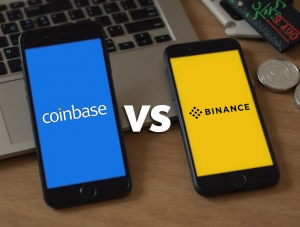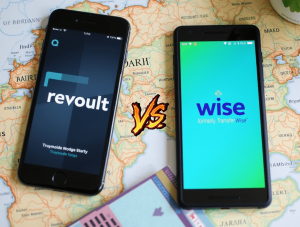
Stripe vs. Square: Which Payment Processor is Best for Businesses?
Did you know that businesses lose approximately 30% of potential sales when they don’t offer customers their preferred payment methods? In today’s digital economy, selecting the right payment processor isn’t just about accepting credit cards—it’s about creating seamless purchase experiences that drive revenue and build customer loyalty.
For businesses evaluating their payment processing options, Stripe and Square consistently emerge as industry leaders, but they serve different business needs and operate on different models. Whether you’re launching an e-commerce store, running a brick-and-mortar retail shop, or managing a complex marketplace platform, your choice between these two processors can significantly impact your operations, costs, and growth potential.
In this comprehensive comparison, we’ll analyze how Stripe and Square stack up across critical factors including features, pricing, ease of use, and business compatibility to help you determine which payment processor will best serve your specific business requirements in 2025.
Understanding the Key Players: Stripe vs. Square
Stripe: The Developer-Friendly Online Payment Powerhouse
Founded in 2010, Stripe has established itself as the go-to payment processor for online businesses, particularly those with complex payment needs or custom implementations. The company processes hundreds of billions in annual payment volume and powers millions of businesses worldwide.
Stripe excels in:
- Advanced API-based payment integration
- Global payment processing with multi-currency support
- Subscription billing and recurring payment models
- Marketplace and platform payment solutions
- Developer-focused tools and documentation
Square: The All-in-One Business Solution Provider
Square launched in 2009 with its iconic white card reader but has since evolved into a comprehensive business management platform. While maintaining strength in in-person payments, Square now offers a robust ecosystem of business tools spanning point-of-sale, e-commerce, banking, and more.
Square specializes in:
- Integrated point-of-sale solutions
- Small business-friendly interfaces with minimal technical requirements
- All-in-one business management tools
- In-person and online payment processing
- Retail, restaurant, and service industry solutions
Feature Comparison: What Each Platform Offers
Payment Processing Capabilities
Stripe Payment Options:
- Credit and debit cards (all major networks)
- Digital wallets (Apple Pay, Google Pay)
- ACH direct debits
- International payment methods (SEPA, Bacs, iDEAL, etc.)
- Buy Now, Pay Later options (Klarna, Afterpay)
- Cryptocurrencies (through partners)
- Wire transfers and bank redirects
Stripe supports payments in 135+ currencies with settlement in 50+ countries, making it ideal for global operations.
Square Payment Options:
- Credit and debit cards (all major networks)
- Digital wallets (Apple Pay, Google Pay)
- ACH transfers
- Square gift cards
- Cash recording and management
- Buy Now, Pay Later through Afterpay
- QR code payments
Square’s payment options are comprehensive but more focused on the U.S. market, with international capabilities expanding but still limited compared to Stripe.
Hardware and Point-of-Sale Support
Stripe Hardware:
- Stripe Terminal (card readers for in-person payments)
- Limited hardware options focused on simple in-person needs
- Third-party integration capabilities
Square Hardware:
- Extensive range of hardware including readers, registers, and terminals
- Purpose-built options for different industries (retail, restaurant, mobile)
- Integrated stands, receipt printers, cash drawers, and barcode scanners
- Complete point-of-sale systems with purpose-built software
This represents one of the starkest differences between the platforms: Square offers a comprehensive hardware ecosystem while Stripe’s in-person payment support remains more limited and focused on complementing online operations.
Business Management Features
Stripe Business Tools:
- Stripe Billing (subscription management)
- Stripe Connect (marketplace and platform tools)
- Stripe Radar (fraud prevention)
- Stripe Atlas (business formation)
- Stripe Capital (business financing)
- Stripe Tax (automated tax calculations)
- Stripe Identity (identity verification)
- Stripe Climate (carbon removal contributions)
Square Business Tools:
- Square Point of Sale (with industry-specific versions)
- Square Online (e-commerce platform)
- Square Appointments (scheduling software)
- Square Payroll
- Square Banking (business accounts, loans, instant deposits)
- Square Marketing and Loyalty
- Square Dashboard (business analytics)
- Team Management tools
- Inventory management
Square offers more operational business management features, while Stripe focuses more on payment-adjacent services and developer tools.
Integration and Customization
Stripe: Ultimate Flexibility for Developers
Stripe is renowned for its developer-friendly approach:
- Comprehensive API documentation
- Client and server-side libraries in multiple programming languages
- Webhooks for event-driven integrations
- Pre-built UI components (Stripe Elements)
- Customizable checkout flows
- Extensive testing tools and environments
- Advanced fraud prevention algorithms
For businesses with technical resources, Stripe offers nearly unlimited customization potential, allowing you to build precisely the payment experience you envision.
Square: User-Friendly with Less Technical Overhead
Square prioritizes ease of implementation and use:
- Ready-to-use e-commerce site builder
- App marketplace with pre-built integrations
- API access with simpler implementation
- No-code payment link creation
- Embeddable buy buttons and checkout
- Built-in website hosting options
- QR code payment generation
Square requires significantly less technical expertise to implement, making it accessible to businesses without dedicated development resources.
Pricing Structure: Breaking Down the Costs
Stripe Pricing Model
Standard Processing Fees:
- Online transactions: 2.9% + $0.30 per successful card charge
- International cards: Additional 1% fee
- Currency conversion: Additional 1% fee
- In-person transactions (via Terminal): 2.7% + $0.05
Additional Service Costs:
- Stripe Billing: 0.5%-0.8% on recurring charges
- Stripe Connect: 0.25%-2% plus fees for connected accounts
- Custom packages available for high-volume businesses
Stripe’s pricing is straightforward but additional services often come with their own fees. There are no monthly fees for the standard service.
Square Pricing Model
Standard Processing Fees:
- In-person transactions: 2.6% + $0.10 per tap, dip, or swipe
- Online transactions: 2.9% + $0.30 per transaction
- Manual keyed-in transactions: 3.5% + $0.15
- Invoices: 2.9% + $0.30 per paid invoice
Subscription Options:
- Free plan with standard processing rates
- Plus plan: $29/month (includes lower processing rates for some businesses)
- Premium plan: Custom pricing for higher volume businesses
- Industry-specific pricing for restaurants and retail
Square’s pricing model includes potential subscription fees but may offer overall lower transaction costs for businesses with high in-person payment volume.
Business Compatibility: Finding Your Best Fit
When Stripe Shines Best
Stripe typically works better for:
- E-commerce-first businesses with primarily online sales channels
- Software as a Service (SaaS) companies needing subscription billing
- Marketplace platforms connecting buyers and sellers
- Global businesses requiring multi-currency support
- Companies with development resources who want a customized payment flow
- Businesses with complex payment needs like recurring billing, usage-based pricing, or split payments
“For our SaaS platform, Stripe’s subscription billing tools and developer-friendly API were game-changers. The ability to manage complex pricing tiers and automate subscription lifecycle events saved us months of development time,” says Jennifer Chen, CTO of SaaSly, a customer management platform.
When Square Takes the Lead
Square typically works better for:
- Brick-and-mortar retail shops needing complete point-of-sale systems
- Restaurants and food service businesses requiring specialized features
- Service providers who need scheduling and appointment features
- Small businesses without technical staff who need simple implementation
- Companies wanting an all-in-one business solution beyond just payments
- Businesses that take both in-person and online payments in roughly equal measure
“As a small boutique owner, Square gave me everything I needed to run my business without having to piece together multiple systems or hire a developer. From inventory management to loyalty programs, it’s all integrated in one place,” explains Miguel Rodriguez, owner of Urban Thread Apparel.
Security and Compliance Considerations
Both Stripe and Square maintain industry-leading security standards:
Stripe Security Features:
- PCI Service Provider Level 1 certification (highest level)
- Advanced fraud detection through Stripe Radar
- 3D Secure authentication support
- GDPR compliance tools
- End-to-end encryption
- Team permission controls
- Customizable security rules
Square Security Features:
- PCI compliance handling (with Square hardware)
- End-to-end encryption
- Fraud detection systems
- Secure customer data storage
- Payment dispute management
- Security notifications and alerts
- Team management with permission controls
Both services effectively shield businesses from many security and compliance concerns, handling the complex requirements of payment card industry standards.
Customer Support and Resources
Stripe Support Options:
- 24/7 email support
- 24/7 chat support
- Phone support for Advanced and Premium plans
- Extensive documentation and guides
- Developer forum
- Large community of developers and integration partners
Square Support Options:
- Phone support (expanded hours)
- Email support
- Live chat
- Square community forum
- Knowledgebase and how-to guides
- Dedicated support for premium subscribers
- Regular webinars and training sessions
Square typically receives higher marks for accessibility of human support, particularly for non-technical users, while Stripe excels in documentation quality and developer resources.
Making the Decision: How to Choose Between Stripe and Square
Consider these factors when making your decision:
- Business model: Online-first vs. in-person or hybrid
- Technical resources: Developer availability and expertise
- Growth plans: International expansion needs
- Sales channels: Current and planned points of customer interaction
- Transaction types: Simple one-time vs. complex recurring
- Business management needs: Single payment solution vs. integrated business platform
- Hardware requirements: Extensive POS needs vs. minimal in-person processing
Conclusion
Both Stripe and Square offer powerful payment processing capabilities, but they serve different business types with different strengths.
Stripe emerges as the superior choice for online businesses with development resources, subscription-based models, marketplace platforms, or global payment needs. Its unmatched flexibility and powerful APIs enable almost any payment scenario, though it requires more technical expertise to fully leverage.
Square offers the more compelling solution for businesses with significant in-person sales, those needing comprehensive point-of-sale systems, or companies without technical resources. Its all-in-one business platform provides everything from appointment scheduling to inventory management in a user-friendly package.
Many businesses find that their needs clearly align with one platform’s strengths. However, some businesses may benefit from using both processors for different aspects of their operations—Stripe for online custom checkout experiences and Square for in-person sales, for example.
The best payment processor for your business ultimately depends on your specific operational needs, technical capabilities, and growth trajectory. By carefully evaluating these factors against each platform’s strengths, you can select the payment solution that will best support your business success in 2025 and beyond.
Frequently Asked Questions
Which is cheaper, Stripe or Square?
For in-person transactions, Square is generally less expensive (2.6% + $0.10 vs. Stripe’s 2.7% + $0.05). For online transactions, both charge 2.9% + $0.30 for standard processing. Square may have lower overall costs for businesses that utilize their full ecosystem, while Stripe may be more economical for high-volume international transactions due to better foreign exchange rates.
Can I use both Stripe and Square for different parts of my business?
Yes, many businesses use Square for in-person sales and Stripe for online transactions or subscription billing. While this creates some operational complexity, it allows you to leverage the strengths of each platform.
Which platform is better for international businesses?
Stripe has significantly better international payment support, with the ability to accept 135+ currencies and settle in 50+ countries. Square is more limited internationally, though it continues to expand its global presence.
Do I need a developer to implement Stripe?
While having development resources will help you take full advantage of Stripe’s capabilities, they do offer some no-code solutions like payment links and a hosted checkout page. However, Square is much more accessible for businesses without technical staff.
Which platform offers better analytics and reporting?
Both platforms offer robust analytics, but they focus on different metrics. Square provides more operational business insights across sales, inventory, and customer behavior. Stripe’s reporting excels in payment performance, conversion analysis, and subscription metrics.
Can I migrate from one platform to the other?
Yes, but the process involves several considerations including updating payment forms, transferring customer payment information, and adjusting business operations. Both platforms offer migration assistance, but you should expect some transition challenges, particularly with recurring billing.














